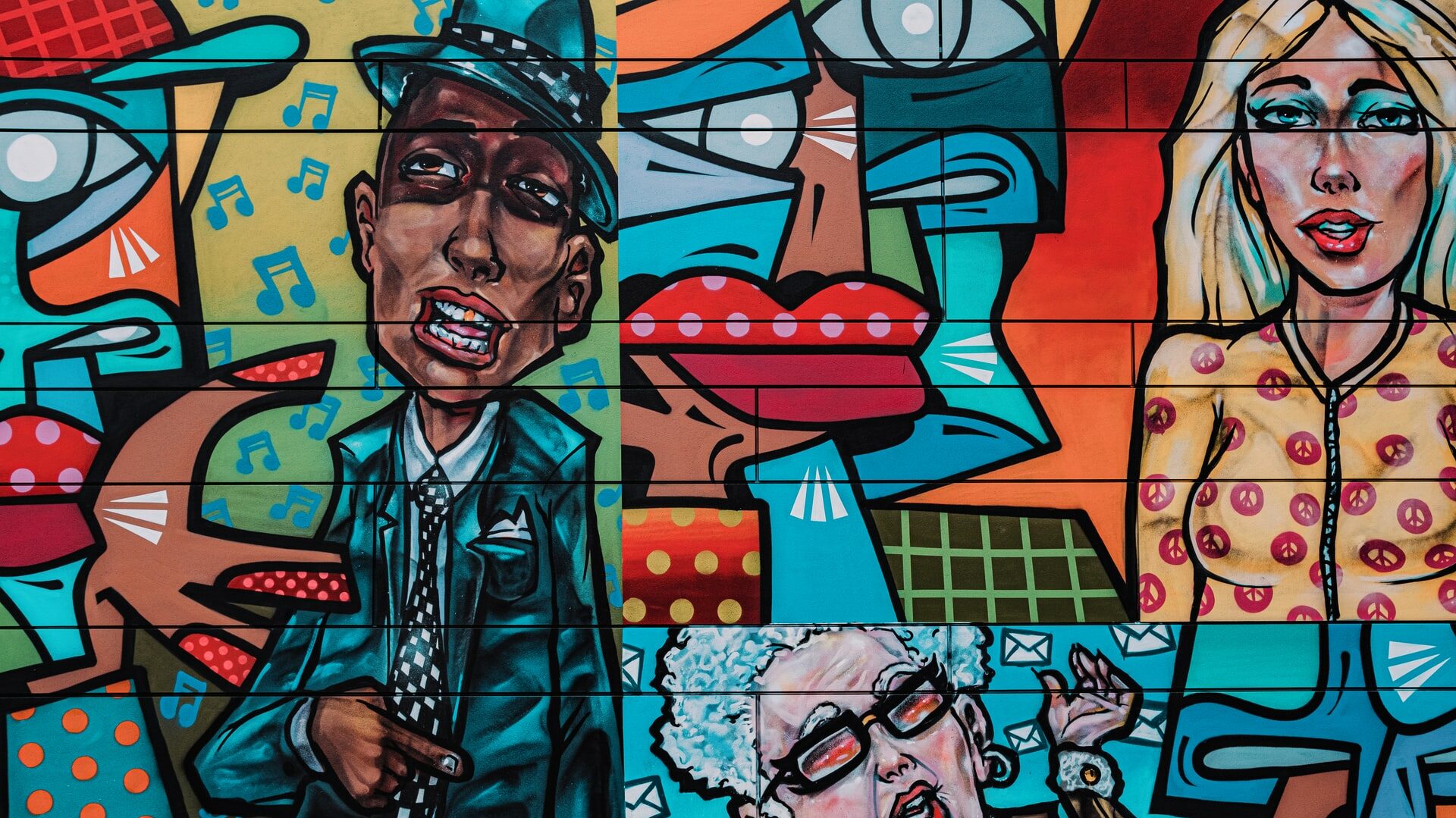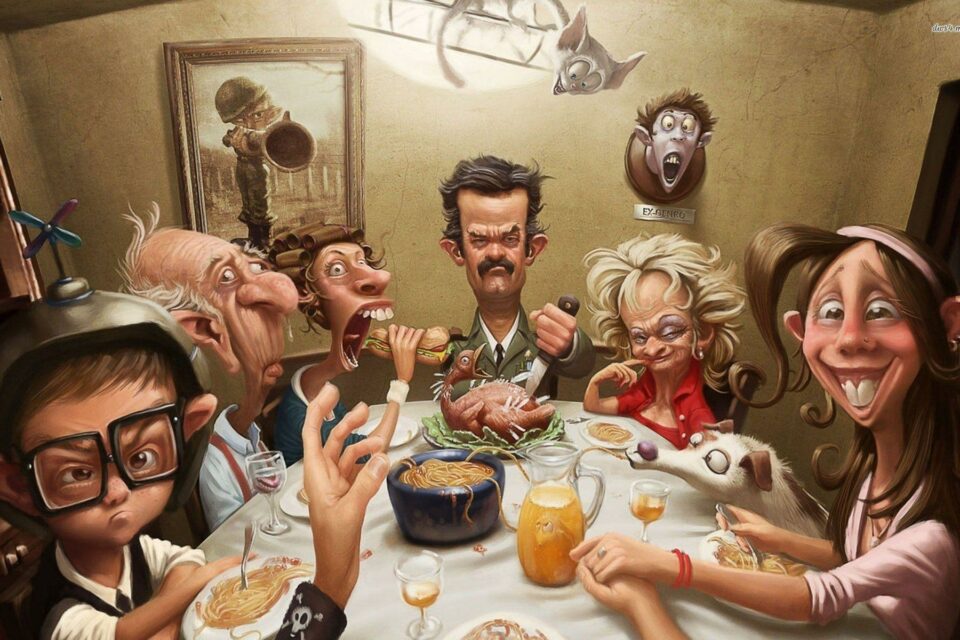The history of caricature dates back to antiquity. Even in ancient Greece, images on amphorae depicting all sorts of human vices (greed, pride, adultery, lust) were very popular.
Pieter Bruegel de Oude and Hiëronymus Bosch often have satirical subjects and images in their paintings. Leonardo da Vinci made sketches with grotesque depictions of people and Giuseppe Arcimboldo made his famous “curious” pictures.
But the genre of caricature did not fully emerge until the 16th century in Germany, during the Peasants’ War and the Reformation period. Unknown folk authors depicted satirical images of the authorities and the Catholic Church on printed leaflets. A little later the young genre appeared during the bourgeois revolutions in other European countries (Holland, England, and France).
The first professional caricaturist, Pier Leone Ghezzi, lived and worked in Italy in the late seventeenth and early eighteenth centuries. His artistic legacy includes fine paintings, frescoes and enamel paintings in rococo style, but the outstanding graphic artist gained great popularity thanks to his numerous satirical images of his contemporaries.
In the middle of the eighteenth century, the caricature genre became widespread in other European countries and North America. Outstanding master William Hogarth was the first in England who began to create caricature prints. His artistic work was continued by other representatives of the genre – James Gillray and Thomas Rowlandson. Cartoonists of that era lauded aristocrats and even royalty, while those in power condescended to their work.
In the nineteenth century, the art of caricature experienced a true flowering. Several factors contributed to it: the emergence of new techniques of engraving and painting, the rapid growth of printing production, the rapid politicization of society and numerous revolutionary events in Europe.
The greatest caricaturist of the 19th century, according to most historians, was Honoré Daumier. This French master of pictorial satire made caricature a full-fledged genre of art. His pencil drawings and lithographs infuriated King Louis-Philippe of France. The satirical images, full of spiteful mockery, were easily recognizable and hit the target precisely. Domier was even sent to prison for six months for one of his works.
In the twentieth century, interest in caricature only increased. With the development of democracy artists of this genre became more protected from the attacks of the authorities, and the demand for denunciatory satirical drawings increased significantly. The rulers of totalitarian regimes also appreciated the power of caricature. In Hitler’s Germany and Stalin’s Soviet Union, satirical images were skillfully used to propagandize the dominant ideology and crack down on dissent.
Even in the early twenty-first century, caricature has not lost its social poignancy. This genre continues to fulfill its primary function of criticizing the ills of our society. Unfortunately, the professional activities of cartoonists are not always duly appreciated. In January 2015, Islamic fanatics massacred the French magazine Charlie Hebdo, which had published satirical images of the prophet Muhammad. The terrorists killed 17 people: the magazine’s staff and police officers.

